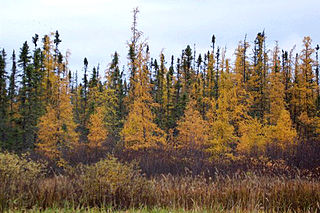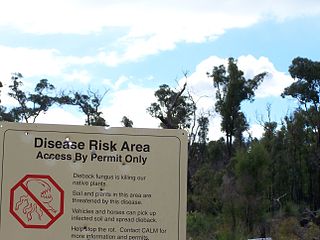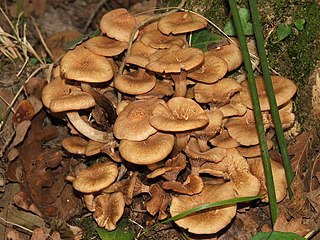
Fraxinus, English name ash, is a genus of flowering plants in the olive and lilac family, Oleaceae. It contains 45–65 species of usually medium to large trees, mostly deciduous, though a few subtropical species are evergreen. The genus is widespread across much of Europe, Asia, and North America.

Fraxinus americana, the white ash or American ash, is a species of ash tree native to eastern and central North America. It is found in mesophytic hardwood forests from Nova Scotia west to Minnesota, south to northern Florida, and southwest to eastern Texas. Isolated populations have also been found in western Texas, Wyoming, and Colorado, and the species is reportedly naturalized in Hawaii.

Betula pendula, commonly known as silver birch, warty birch, European white birch, or East Asian white birch, is a species of tree in the family Betulaceae, native to Europe and parts of Asia, though in southern Europe, it is only found at higher altitudes. Its range extends into Siberia, China, and southwest Asia in the mountains of northern Turkey, the Caucasus, and northern Iran. It has been introduced into North America, where it is known as the European white birch, and is considered invasive in some states in the United States and parts of Canada. The tree can also be found in more temperate regions of Australia.

Betula pubescens, commonly known as downy birch and also as moor birch, white birch, European white birch or hairy birch, is a species of deciduous tree, native and abundant throughout northern Europe and northern Asia, growing farther north than any other broadleaf tree. It is closely related to, and often confused with, the silver birch, but grows in wetter places with heavier soils and poorer drainage; smaller trees can also be confused with the dwarf birch.

Larix laricina, commonly known as the tamarack, hackmatack, eastern larch, black larch, red larch, or American larch, is a species of larch native to Canada, from eastern Yukon and Inuvik, Northwest Territories east to Newfoundland, and also south into the upper northeastern United States from Minnesota to Cranesville Swamp, West Virginia; there is also an isolated population in central Alaska. The word akemantak is an Algonquian name for the species and means "wood used for snowshoes".

Phytophthora cinnamomi is a soil-borne water mould that produces an infection which causes a condition in plants called "root rot" or "dieback". The plant pathogen is one of the world's most invasive species and is present in over 70 countries around the world.

Betula papyrifera is a short-lived species of birch native to northern North America. Paper birch is named for the tree's thin white bark, which often peels in paper like layers from the trunk. Paper birch is often one of the first species to colonize a burned area within the northern latitudes, and is an important species for moose browsing. The wood is often used for pulpwood and firewood.

Betula populifolia is a deciduous tree native to eastern North America.
Maple decline is a term describing loss of vigor and dieback in forests or urban plantings of maple trees. It is not a disease or a syndrome, nor is it contagious or endemic. Instead, it is a generalized set of symptoms that may be applied to any species of tree suffering a wide range of different stressors.

Trichoderma viride is a fungus and a biofungicide.

Armillaria tabescens is a species of fungus in the family Physalacriaceae. It is a plant pathogen. The mycelium of the fungus is bioluminescent.

Nectria cinnabarina, also known as coral spot, is a plant pathogen that causes cankers on broadleaf trees. This disease is polycyclic and infects trees in the cool temperate regions of the Northern Hemisphere. N. cinnabarina is typically saprophytic, but will act as a weak parasite if presented with an opportunity via wounds in the tree or other stressors that weaken the tree’s defense to the disease. A study published in 2011 showed that this complex consists of at least 4 distinct species. There are only a few ways to manage this disease with techniques such as sanitation and pruning away branches that have the cankers. N. cinnabarina is not as significant a problem as other Nectria spp., some of which are the most important pathogens to infect hardwood trees.

Lasiodiplodia theobromae is a plant pathogen with a very wide host range. It causes rotting and dieback in most species it infects. It is a common post harvest fungus disease of citrus known as stem-end rot. It is a cause of bot canker of grapevine. It also infects Biancaea sappan, a species of flowering tree also known as Sappanwood.
The plant pathogenic fungus Leucostoma kunzei is the causal agent of Leucostoma canker a disease of spruce trees found in the Northern Hemisphere, predominantly on Norway spruce and Colorado blue spruce. This disease is one of the most common and detrimental stem diseases of Picea species in the northeastern United States, yet it also affects other coniferous species. Rarely does it kill its host tree; however, the disease does disfigure by killing host branches and causing resin exudation from perennial lesions on branches or trunks.

Forest dieback is a condition in trees or woody plants in which peripheral parts are killed, either by pathogens, parasites or due to conditions like acid rain and drought. Two of the nine tipping points for major climate changes forecast for the next century, are directly related to forest diebacks.
Forest pathology is the research of both biotic and abiotic maladies affecting the health of a forest ecosystem, primarily fungal pathogens and their insect vectors. It is a subfield of forestry and plant pathology.

Hymenoscyphus fraxineus is an Ascomycete fungus that causes ash dieback, a chronic fungal disease of ash trees in Europe characterised by leaf loss and crown dieback in infected trees. The fungus was first scientifically described in 2006 under the name Chalara fraxinea. Four years later it was discovered that Chalara fraxinea is the asexual (anamorphic) stage of a fungus that was subsequently named Hymenoscyphus pseudoalbidus and then renamed as Hymenoscyphus fraxineus.

Species which are not native to a forest ecosystem can act as an agent of disturbance, changing forest dynamics as they invade and spread. Invasive insects and pathogens (diseases) are introduced to the United States through international trade, and spread through means of natural and human-dispersal. Invasive insects and pathogens are a serious threat to many forests in the United States and have decimated populations of several tree species, including American chestnut, American elm, eastern hemlock, whitebark pine, and the native ash species. The loss of these tree species is typically rapid with both short and long-term impacts to the forest ecosystem.
Phytobia betulae is a species of fly in the family Agromyzidae. It is native to Northern and Eastern Europe, being common in Scandinavia. Its larvae tunnel through the branches and trunk of birch trees, often leaving a dark stain in the timber but not adversely affecting the tree's growth.
















